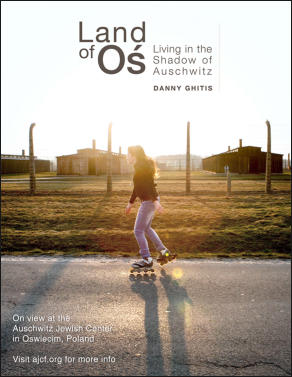













The magazine of the art-form of the photo-essay
“A free, really high quality photo-essay magazine. Fabulous!”
Stephen Fry. British actor, writer and film & documentary maker

Sept 2014 back issue

by Danny Ghitis




Every year more than a million tourists visit Auschwitz and Birkenau to pay respect to the innocent men, women and
children who were murdered there. Because they usually come and go on the same day, most aren’t aware that
Auschwitz was located in the outskirts of the old Polish town of Oświęcim. Those who do notice—maybe they see the
shopping mall nearby or spot high school sweethearts holding hands—are faced with an impossible question: How can
life go on here in the aftermath of such overwhelming evil?
Many residents say Oświęcim is a perfectly normal place, that past and present markedly diverge. But outsiders
associate it with the concentration camps and some claim it should be left uninhabited. In Oświęcim, symbolism is
projected onto every building, every rock and grain of soil. Residents negotiate between past and present, both the
pleasant and the macabre.
As the grandson of a Holocaust survivor, I was intrigued by Oświęcim. To me, Poland represented the epicenter of the
Holocaust. It was once the hub of Jewish life and learning in Europe, but its population was reduced to ashes during
WWII. To Jews, most Polish history ended after the war. But to Poles, life has carried on. I wanted to see how.
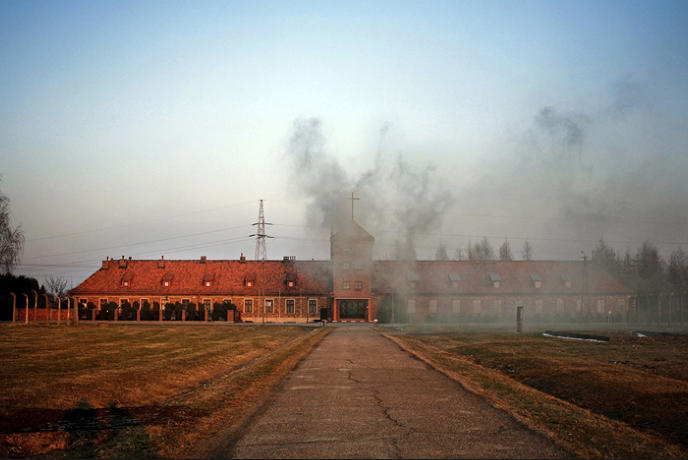
Coal smoke billows from the former SS Headquarters at Auschwitz II - Birkenau, which is now an active Catholic
Church for the village of Brzezinka. The large cross above the building is prominent in the skyline of the camp and has
been protested by many Jewish organizations as an effort to ‘Christianize’ the Holocaust.
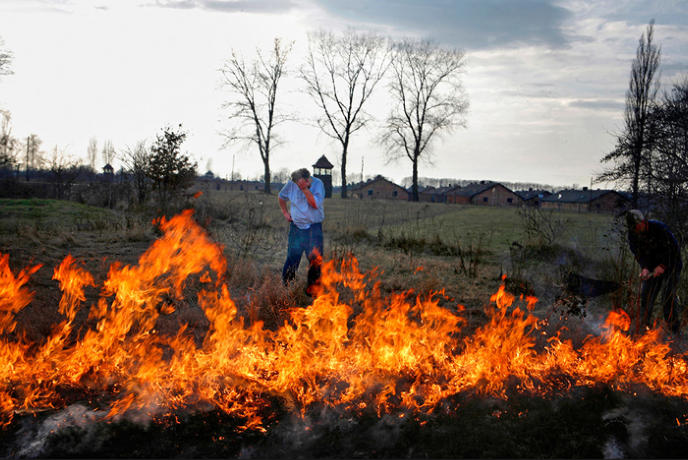
A controlled burn of a crop field in the Polish town of Brzezinka, in view of the extermination camp Auschwitz II -
Birkenau.
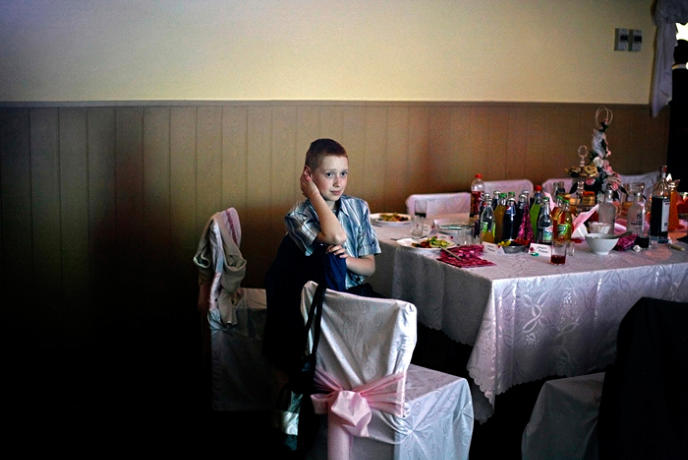
A young boy at a wedding reception above the firehouse in the village of Brzezinka (Birkenau).
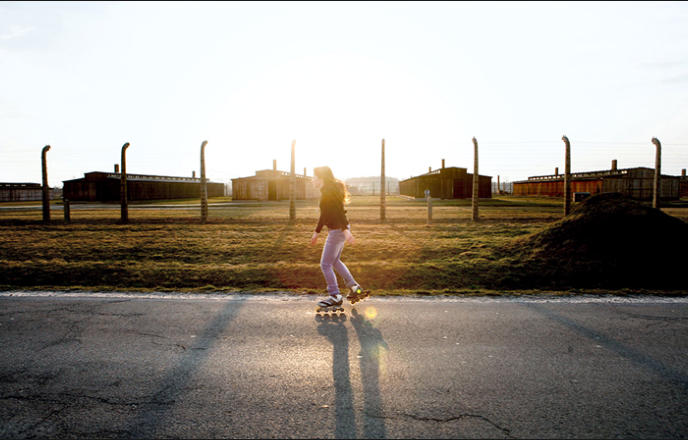
A girl skates along the Birkenau perimeter road headed from the adjacent village of Brzezinka to the town of Oswiecim.
The road separates farmland and houses circling the death camp museum. A buffer zone of 100 meters was
established to limit development near Auschwitz - Birkenau, but some of the land had already been settled by the time
the law was enacted.

A father and son from the town of Brzezinka go fishing in flooded ruins of barracks at Auschwitz II - Birkenau.
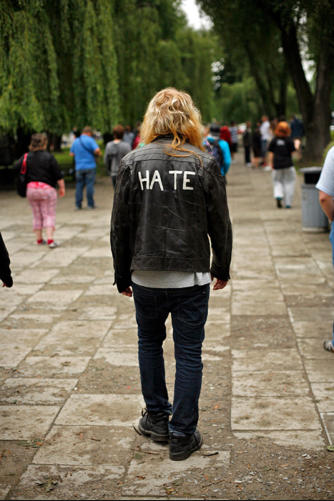
A tourist at Auschwitz wearing a jacket with a punk-rock
reference.
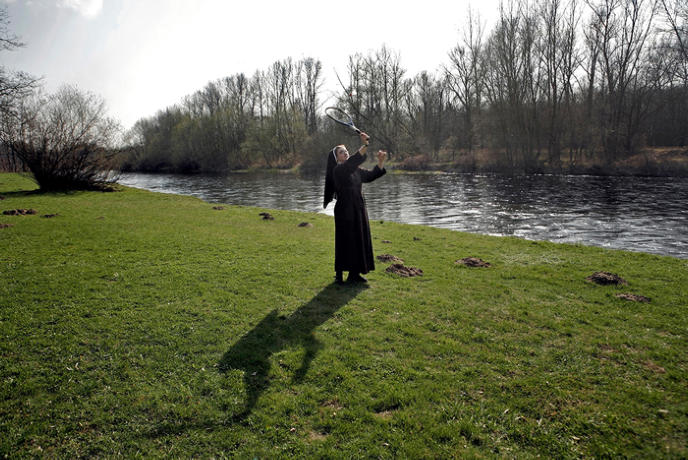
A nun plays badminton with school children on the banks of the Sola river in Oswiecim, Poland. About a mile down the
river lies the concentration camp Auschwitz.
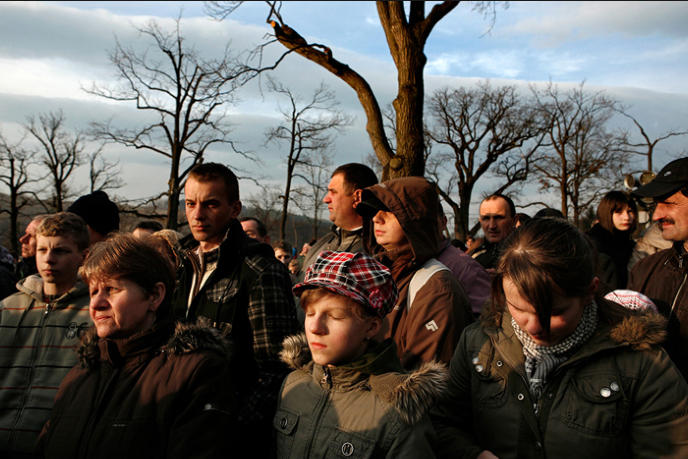
Catholic pilgrims pray at a Way of the Cross procession during Easter at a holy site about 30 miles from Oswiecim.
The late Pope John Paul II was a frequent pilgrim here in his younger days. Poland, which was ethnically diverse
before WWII, is now about 95% Catholic, and likely the most religious country in Europe.
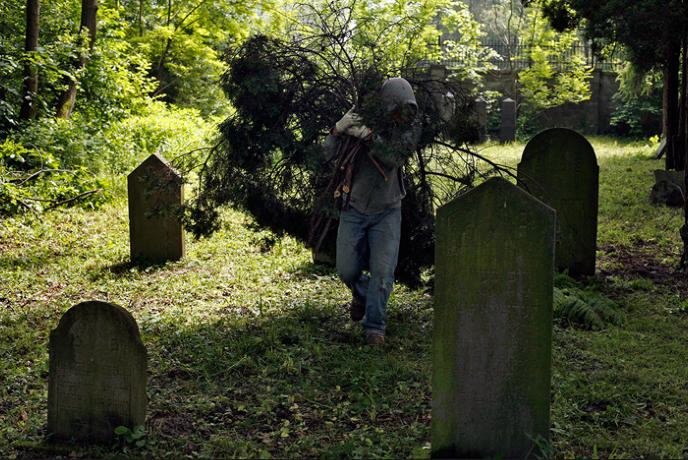
An American West Point Academy cadet helps clean up the Jewish cemetery in Oswiecim during a Holocaust
education program offered by the U.S. military.
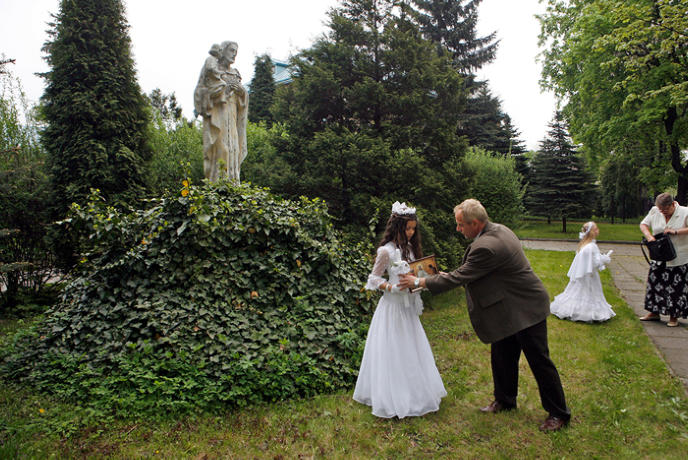
Parents set up their children for pictures outside a pre-war Oswiecim church after their First Communion.
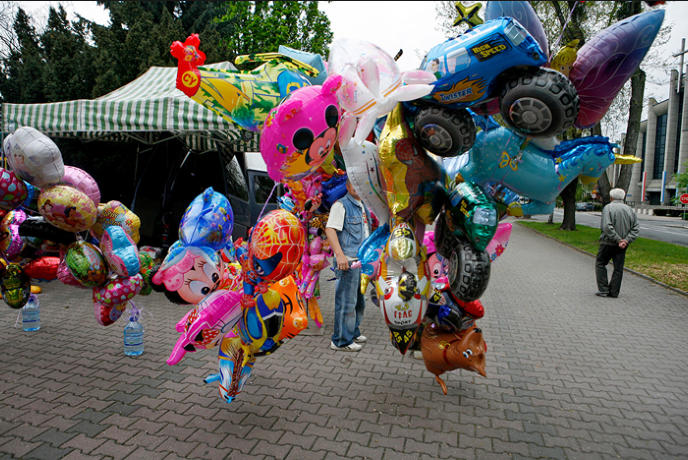
A street vendor sells balloons in Oswiecim during a Polish laborer's holiday festival.
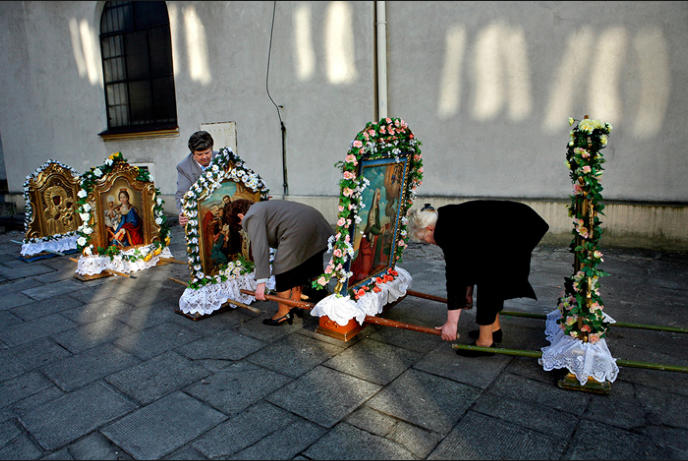
Women prepare for an Easter procession around an old church in the Oswiecim town square. The church is across the
street from the restored Jewish Synagogue and education center.
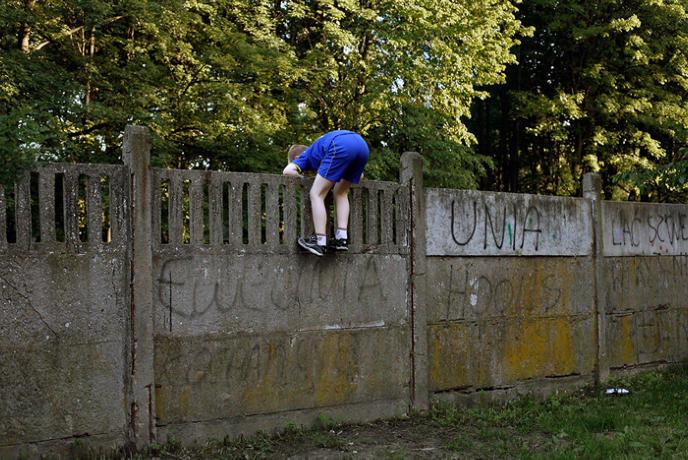
A young boy climbs the barrier between the apartment complex called ‘Muzeum’ and the Auschwitz concentration
camp museum.
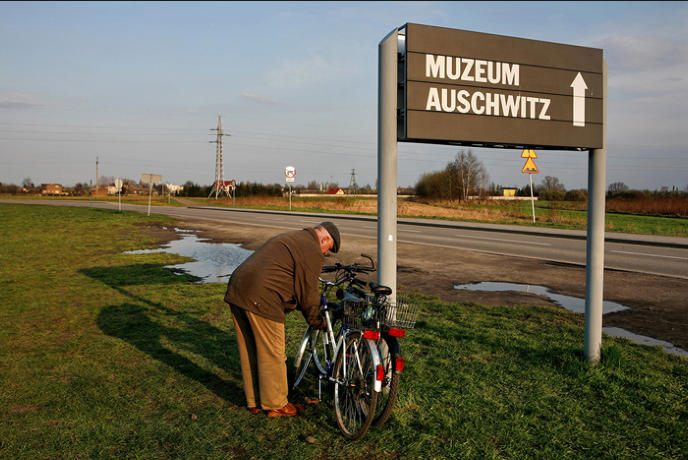
An elderly man from Oswiecim locks his bike to a sign at Auschwitz II - Birkenau directing visitors to the Auschwitz I
museum site.
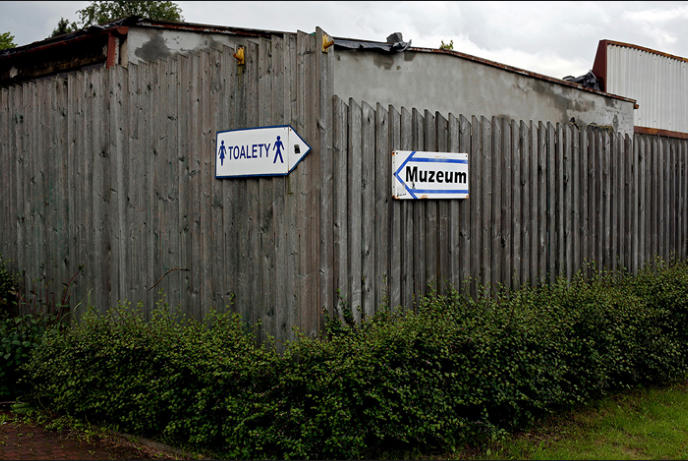
Signs at the overflow parking lot across the street from the Auschwitz museum.
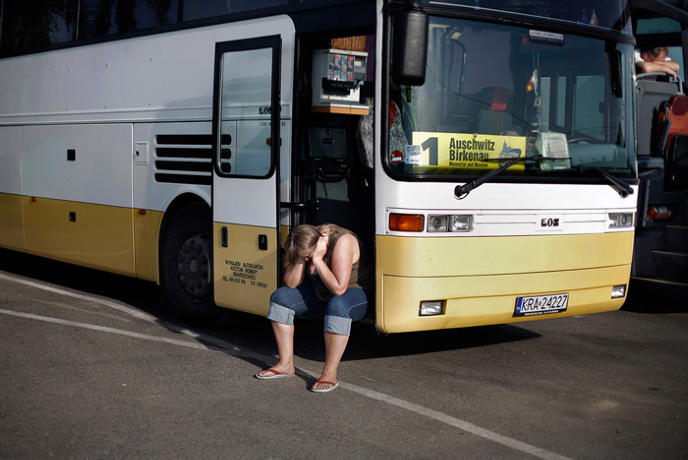
A tourist at Auschwitz II - Birkenau sits at a tour bus in the parking lot by the ‘death gate.’
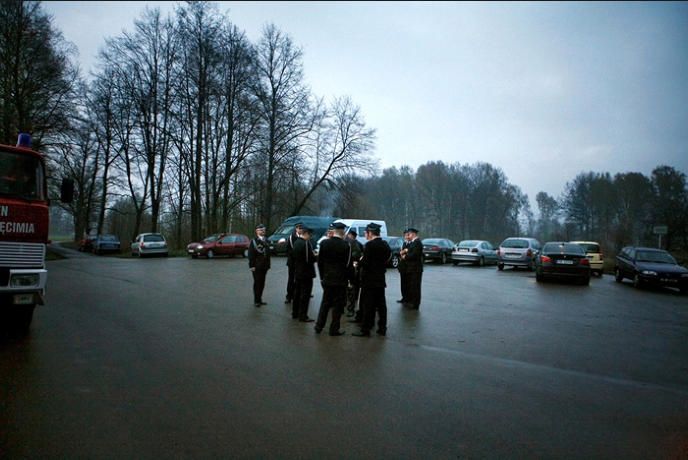
Firemen convene in a parking lot near Birkenau before a memorial service for thousands of murdered Russian POWs.
The service took place as an act of reconciliation after Polish President Lech Kaczynski’s plane crashed on Russian
soil.
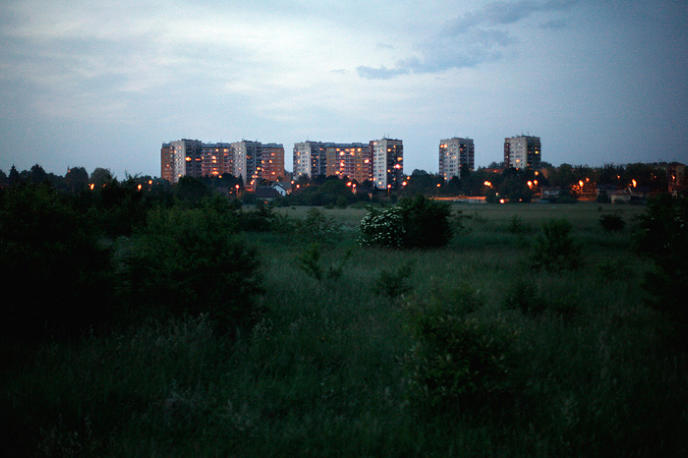
A few high-rise apartment buildings in the center of Oswiecim sometimes referred to as ‘Manhattan’ by residents.
